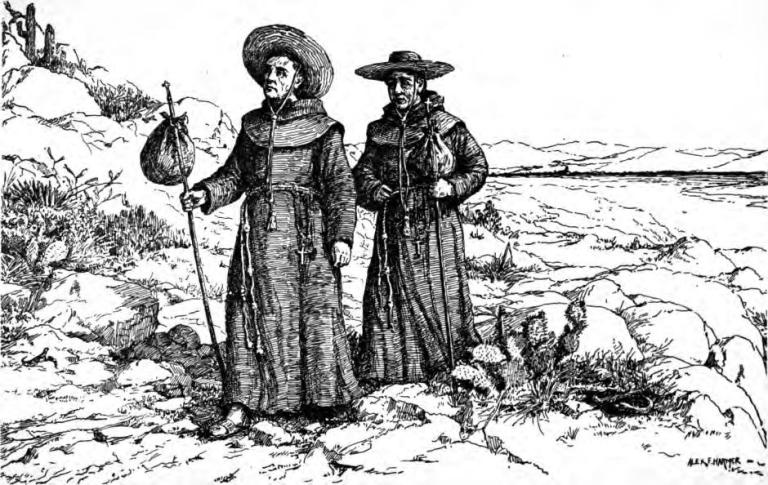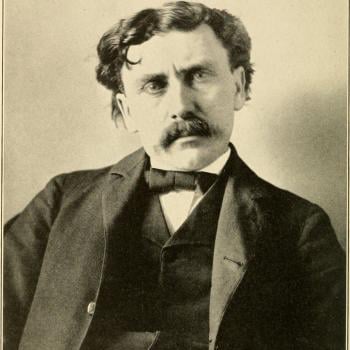As I outlined in my last post, contemporary scholarship on early America stresses its “vast” quality, in terms of the need to expand beyond traditional constraints of national boundaries, and chronological limits. That work is highly relevant to my contemporary project on the religious dimensions of American empire. What would such a “vast” history of this topic look like?
To make an obvious point, one influential history makes a major step towards achieving something very like that, and it is very successful. In 1992, Mark Noll published his A History of Christianity in the United States and Canada (Eerdmans) which is now in a revised and updated second 2019 edition. We also have a good deal of work on integrating Caribbean stories into the North American mainstream. Through such work, we see the steady influx of individuals and ideas that become so thoroughly integrated into US history that we forget they ever had any other origins. Think of Aimee Semple McPherson, born in Salford, Ontario, but now inextricably linked in our minds with Los Angeles. The Caribbean factor is very marked in Black American religious history, from early times to the present.
Despite Noll’s achievement, we still find histories of American religion that focus all but exclusively on the British presence on the East Coast, which was overwhelmingly Protestant. But if you will pardon the cliché, suppose we take a thirty thousand foot overview of all the lands that became the Lower Forty Eight. As I remarked last time, in the mid-eighteenth century, around half the people of that territory were Natives, with their own range of religions and beliefs, however difficult it is to define those in any standard Western sense of “a religion.” But should those beliefs not feature prominently in any survey? If Michigan in 1800 had fifty thousand Natives and five thousand Whites, should that fact not affect the story we tell of religion and religious life?
Focusing on that early period, time and again we run up against the influence of empires. Look for instance at the lands that become the US as they existed in the seventeenth and eighteenth centuries. The obvious religious presence across much of that territory is of course Catholic. The first Christian Eucharist in that territory was probably a Mass said in Kansas in 1541, with services at St Augustine in Florida from the 1560s. Missions were establishing themselves strongly across California, Florida, Texas, and New Mexico, and throughout, those Catholic clergy were the advance guard of the Spanish empire, securing territories for that realm. In its day, all this activity represented a projection of power from the core Spanish territories in Mexico and Cuba. When a new Catholic diocese was erected at Havana in 1787, its territories included the Floridas and Louisiana. Of course, Spanish “Louisiana” at that point included not just the present state of that name, but the colossal spaces of the Midwest and Plains that Thomas Jefferson would later purchase.
In the west, the huge diocese of Sonora created in 1779 ruled the whole of Upper and Lower California, as well as the present Mexican states of Sinaloa and Sonora. Not until 1840 was a new California diocese created, within what was then Mexico, and including both Upper and Lower territories. It is easy to forget that imperial reality when we look at modern day maps that impose national frontiers that of course did not exist at the time.
Am I the only one who finds this mind-boggling? For a few years around 1790, those two dioceses of Havana and Sonora exercised their authority over Catholic life (which at that point meant the great majority of Christian belief and practice) throughout what now constitutes most of the American West and Midwest, an area that was, well, vast.
Through the eighteenth century, French missionaries were ranging widely around the Great Lakes and the Mississippi, and again, their activities were intimately tied to that country’s empire with its twin centers at Québec and New Orleans. Founded in 1674, the diocese of Québec supervised all French territories in North America, an expanse that notionally stretched to the Gulf of Mexico. The diocese of New Orleans was created in 1793, within Spanish Louisiana, and detaching lands previously subject to Havana.
The French influence in particular was very enduring. As Thoreau recognized in the 1850s, “Prairie is a French word, as Sierra is a Spanish one.” Even at that late date, American travelers in the West needed the expertise of their voyageur or coureur de bois – that is, essential guides who still bore French titles. Willa Cather wrote two fine novels on these lost European Catholic worlds in North America. Death Comes For the Archbishop (1927) is well known, but also worth reading is her Shadows on the Rock (1931), about colonial Québec in the 1690s.
“American religious history is best understood as a sequence of separate infusions of Catholic Christianity. Each new wave forgets its predecessors” (DISCUSS).
Hmm, might any foolhardy soul contemplate writing A History of Christianity in the United States and Mexico? What a prospect!
For obvious practical reasons, we tend to tell these different religious stories – Protestant, Catholic and Native – as discrete entities, but in some instances, we can integrate them, with surprising results. One unifying factor is climate. On several occasions, we can trace the impact of climate-driven catastrophes that had a profound impact across North America, and given the attitudes of the time, these dreadful events were understood in religious or supernatural terms. One occurred during the 1670s, a time of severe cooling across the Northern hemisphere. Resulting changes drove famine and pandemic in many regions, and greatly enhanced tensions between White and Native populations. That in turn laid the foundation for social and political upheavals in at least three North American societies in this decade – in New England (King Philip’s War), in Virginia (Bacon’s Rebellion), and in New Mexico. The last of these, in 1680, produced a Pueblo revolution that actually drove Spanish missionaries and settlers out of the territory for over a decade. Leading that movement was Popé, a Native religious leader or shaman, for whom the ongoing disasters proved that “The God of the Christians is dead. He was made of rotten wood.”
We can also look at the years between 1808 and 1820, which again produced climate upheavals, with super-volcanoes erupting in 1808 and 1815, and the New Madrid earthquakes. The era witnessed extensive wars in North America, which in retrospect marked a decisive phase in the fall of Native power through the South and Midwest, and a massive expansion of the burgeoning American empire. We might ask how any inhabitants of the North American continent could have failed to think of apocalypse, prophecy, and End Times?
This was the era of the Shawnee Prophet, brother to Tecumseh, but others deeply influenced by these events included William Miller, the later founder of Adventism, and a young Joseph Smith, who dated his first vision to 1820. The New Madrid tremors inspired a wave of apocalyptic concern and religious revivalism through the Ohio and Tennessee Valleys, the “Earthquake Revivals.” The 1810s also saw extensive revivals that laid the foundation for the famous Burnt Over District in upper New York state. It was around 1821 that Nat Turner received the first of the visions that led him to be called “the Prophet,” and which culminated in his revolutionary career a decade later. Like the Shawnee Prophet, Nat Turner’s spiritual inspiration led him to become a deadly would-be enemy of American power and American empire. We can draw quite close comparisons between the prophetic visions and spiritual careers of Nat Turner and the would-be empire builder Joseph Smith, but that is another story.
To take another example closely linked to climate, we know how epidemic diseases swept North America, paying no respect whatever to national boundaries or ethnic divisions. Taken in those terms, epidemic and pandemic diseases are intrinsically “vast.” See for example Elizabeth A. Fenn’s Pox Americana: The Great Smallpox Epidemic of 1775-82 (2001), or my own work on the yellow fever epidemic of the 1790s. Yellow fever, which raged through the American South through the 1870s, demonstrated the region’s close ties to the Caribbean world.
In Native American societies, we can actually use successive epidemics to map the progress of the American imperial frontier, as new regions were devastated one after another. For all the savagery of the centuries-long wars, North American Natives suffered far less from bullets or cannon shells than what has been termed the “biological unification of mankind.” Most of these disasters inspired some kind of religious response, although the exact form this took varied greatly according to local cultures and traditions. Some inspired healing movements, others stirred campaigns for spiritual revival and national renewal, while others still reinforced racial boundaries and demonization. Exploring and comparing these events offers real potential for expanding familiar religious narratives.
Potentially, then, we can integrate White, Native, and Black histories, crossing multiple frontiers in the process.
Of course, these are only possible approaches to the topic, and to “vastness.” To take another possible direction, Emily Conroy-Krutz published a provocative account of “The Vast Kingdom of God,” which described early Americans visualizations of the Kingdom of God and its missionary expansion. “Missionaries wanted the world to look like the United States because they thought it was already part of the kingdom of God.” The American Board of Commissioners for Foreign Missions (ABCFM) was created in 1810. This again points to the American desire to cross frontiers, and to imagine potential ventures into the whole world. If not framed initially those terms, such ambitions segued easily into later attempts to build overseas political empires, notably in Asia. (I have also posted on this topic recently at this site).
I think these current historiographical discussions are very significant for anyone writing about American religious history, and by no means only in that very early period. The Future is Vast.
More next time.

















